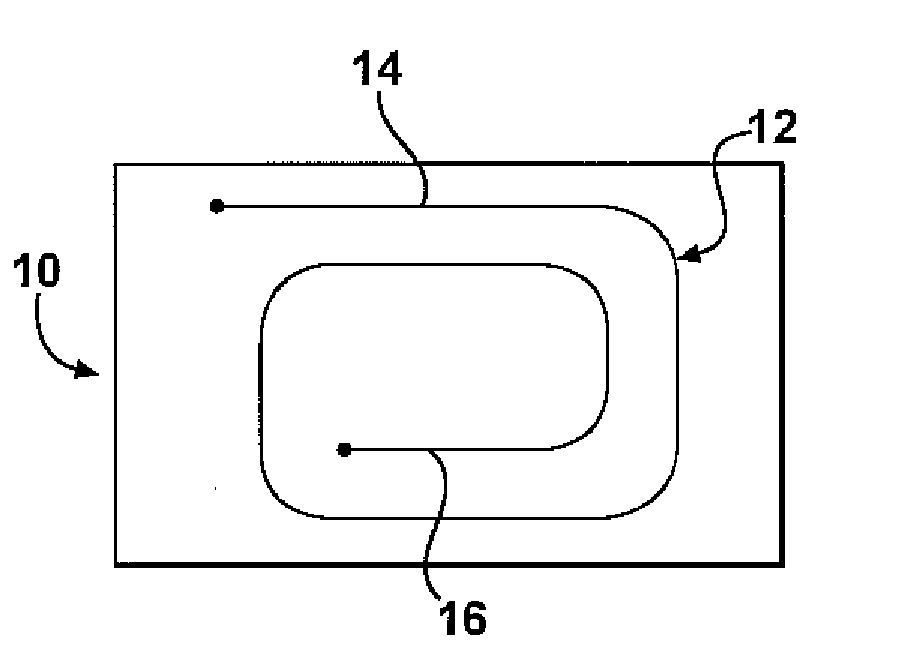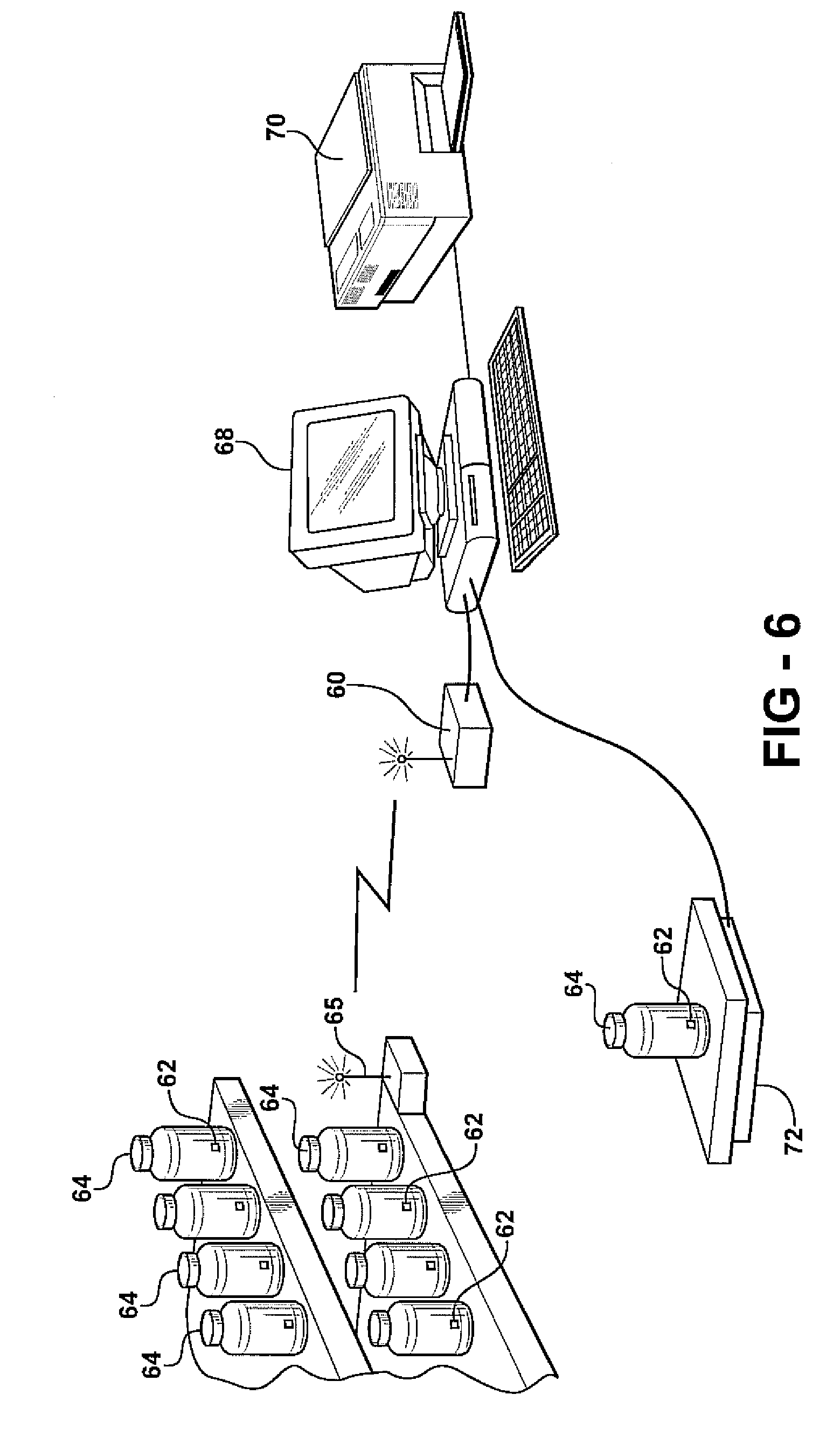Container with embedded RFID tag
a technology of rfid tag and container, which is applied in the direction of radio transmission, transmission, instruments, etc., can solve the problem of relatively thin walls and chip embedded in containers in an unobtrusive manner, and achieve the effect of accurately representing the quantity of materials stored
- Summary
- Abstract
- Description
- Claims
- Application Information
AI Technical Summary
Problems solved by technology
Method used
Image
Examples
Embodiment Construction
[0018] The RFID chip with an integral antenna preferably operates in the gigahertz range, preferably above about 20 GHz, and most preferably at 24 GHz. This is in the microwave range and requires a specialized thin film material of very high insulation value for use with microwave frequencies. Typical materials include aluminum oxide, beryllium oxide, aluminum nitride, fused silica quartz and sapphire.
[0019]FIG. 1 illustrates an RFID chip 10 which has an antenna 12 formed on its back side either through sputtering or conventional lithographic techniques. The antenna 12 takes the form of a coil having two ends 14 and 16 which terminate at through-hole connections joined to a conventional RFID chip formed by thin film techniques on the opposite side of the substrate 10. The thin film circuitry preferably includes a microwave to UHF translator disposed between the antenna and the chip transponder itself to convert the microwave frequencies into the UHF frequencies required by the chip...
PUM
 Login to View More
Login to View More Abstract
Description
Claims
Application Information
 Login to View More
Login to View More - R&D
- Intellectual Property
- Life Sciences
- Materials
- Tech Scout
- Unparalleled Data Quality
- Higher Quality Content
- 60% Fewer Hallucinations
Browse by: Latest US Patents, China's latest patents, Technical Efficacy Thesaurus, Application Domain, Technology Topic, Popular Technical Reports.
© 2025 PatSnap. All rights reserved.Legal|Privacy policy|Modern Slavery Act Transparency Statement|Sitemap|About US| Contact US: help@patsnap.com



